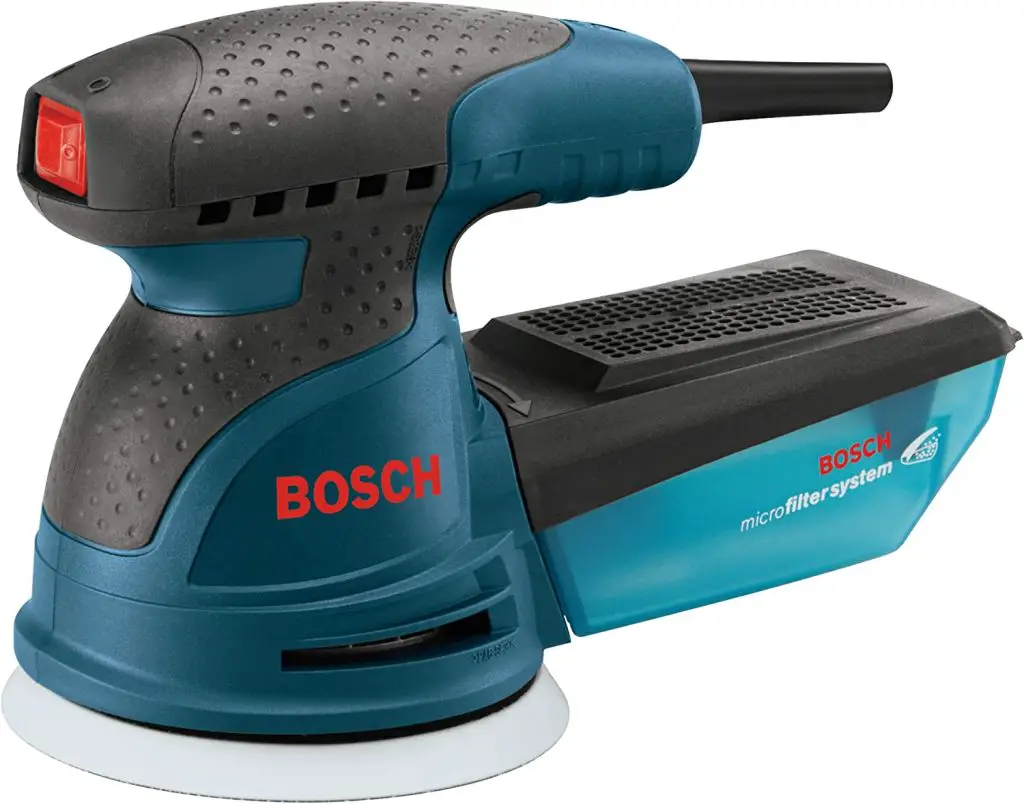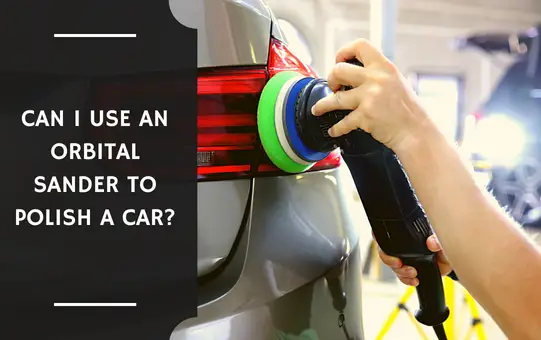Maintaining the exterior of your car is essential to preserve its aesthetic appeal and protect the paintwork.
Can I Use an Orbital Sander to Polish a Car?
Yes! Polishing a car is easy with an orbital sander. Follow the directions and proceed slowly, and remember that dust can be a hazard to health, so use a dust mask and goggles.
In this article, we will explore the potential uses and risks associated with using an orbital sander for car polishing.
See Also: What Is Orbit Sander?
Can I Use an Orbital Sander to Polish a Car? – Guide
One popular method to achieve a smooth and glossy finish is polishing. While there are various tools available for this task, some may wonder if an orbital sander can be used to polish a car. Here is the detailed guide:
1. Understanding Orbital Sanders
Before diving into whether an orbital sander can be used for car polishing, it’s important to understand what an orbital sander is.
An orbital sander is a power tool commonly used in woodworking and other applications.
It features a round sanding pad that moves in a random orbital pattern, minimizing the risk of swirl marks and providing a smooth finish.
2. The Benefits of Using an Orbital Sander for Car Polishing
While an orbital sander is not typically designed for automotive purposes, it can have some advantages when used for car polishing.
Efficiency and Time Savings
One of the main advantages of using an orbital sander is its ability to cover large surface areas quickly.
The random orbital motion of the sanding pad enables efficient and even polishing, which can save you valuable time during the car detailing process.
Consistent Results
The random orbital pattern of an orbital sander helps minimize the risk of creating swirl marks on the car’s surface.
This is particularly important when working with dark-colored or sensitive paint finishes, as any imperfections can be easily visible.
3. Potential Risks and Considerations
While an orbital sander may offer certain benefits, it is crucial to be aware of the potential risks and considerations associated with using this tool for car polishing.
Aggressive Abrasion
Orbital sanders are primarily designed for sanding and may be too aggressive for car polishing.
The high speed and pressure exerted by the sanding pad can remove more material than necessary, potentially damaging the clear coat or paint layers.
Heat Buildup
Continuous and prolonged use of an orbital sander on a car’s surface can generate heat, which may lead to paint burn or other damage.
The heat buildup can occur due to excessive friction between the sanding pad and the paintwork.
It is essential to monitor the temperature and avoid applying excessive pressure to mitigate this risk.

BOSCH Orbital Sander
Experience smooth and flawless sanding with the BOSCH ROS20VSC.
Its powerful motor and efficient dust collection system deliver professional-grade results.
Achieve perfection effortlessly with this reliable and versatile tool. See Now!
4. Alternatives for Car Polishing
Considering the risks involved in using an orbital sander for car polishing, it is advisable to explore alternative methods that are specifically designed for automotive applications.
Dual Action Polisher
A dual-action polisher, also known as a random orbital polisher, is a more suitable tool for car polishing.
It combines the benefits of an orbital sander with a gentle and safe approach for automotive surfaces.
Dual-action polishers provide controlled oscillations that effectively remove defects and swirl marks while minimizing the risk of paint damage.
Hand Polishing
For those who prefer a more hands-on approach or have limited access to power tools, hand polishing is an option worth considering.
Hand polishing involves using specialized polishing compounds, applicator pads, and a circular motion to gently restore the car’s shine.
Although it may require more effort and time compared to machine polishing, it offers greater control and reduces the risk of accidental damage.
5. Best Practices for Car Polishing
Regardless of the method chosen for car polishing, it is important to follow some best practices to achieve optimal results and avoid potential damage.
- Surface Preparation
Before beginning the polishing process, thoroughly wash and dry the car’s exterior to remove any dirt, debris, or loose contaminants. This ensures a clean surface and minimizes the risk of scratching during polishing.
- Test in an Inconspicuous Location
Before applying any polishing technique or using any tool, it is crucial to conduct a test in an inconspicuous area of the car.
Choose a small section, such as the backside of a side mirror or the lower part of a door panel, and apply the chosen polishing method.
This test will help you assess the effectiveness of the technique and ensure that it does not cause any adverse effects on the car’s paintwork.
- Select the Right Polishing Products
Using high-quality polishing products specifically designed for automotive applications is essential. Choose a polish that matches the level of correction needed for your car’s paintwork.
Additionally, consider using a foam pad suitable for polishing, as it helps distribute the polishing compound evenly and minimizes the risk of swirl marks.
- Use Proper Technique
Whether you opt for machine polishing or hand polishing, it is crucial to use the proper technique.
When using a dual-action polisher, maintain a moderate speed and apply light pressure on the surface.
Keep the machine moving at all times to avoid concentrating heat or removing too much material in one spot. For hand polishing, apply the polish in small sections and use gentle, circular motions.
- Regularly Inspect the Surface
Throughout the polishing process, regularly inspect the surface to ensure that you are achieving the desired results.
Look for any swirl marks, scratches, or areas that require further attention. This allows you to make adjustments in technique or product application as needed.
Conclusion
Can i use orbital sander to polish car? Using an orbital sander for car polishing is not recommended due to the risks of paint damage and excessive abrasion.
Opt for a dual-action polisher or hand polishing techniques for greater control and minimized risk.
Conduct a test in an inconspicuous area and follow best practices to achieve optimal results while preserving your car’s exterior. I hope now you can use polishing car with orbital sander.
Read Also: How to Clean Orbital Sander Pad?
can you buff a car with an orbital sander?
Buffing a car with an orbital sander is not recommended. Orbital sanders are designed for sanding and can easily damage a car’s finish. Instead, use a dedicated car buffer or polisher with the appropriate pads and compounds to safely and effectively restore the vehicle’s shine without risking paint damage.
can you polish a car with an orbital sander?
Polishing a car with an orbital sander is possible but not recommended for beginners. It requires specific skills and the right equipment, including foam pads and automotive polishing compounds.
can i use a sander to polish my car?
Using a regular sander to polish your car is not recommended. Sanders are designed for sanding and can easily damage the car’s paint finish, leaving swirl marks or scratches.
can i use sander as polisher?
Using a sander as a polisher is not advisable. Sanders are designed for sanding tasks and may not have the control, speed, or accessories required for safe and effective polishing on a car’s surface.
can you use orbital sander to polish car?
Using an orbital sander to polish a car is possible, but it requires caution and the right equipment. You should use a specific type of orbital sander called a “random orbital polisher,” which is designed for automotive polishing.
